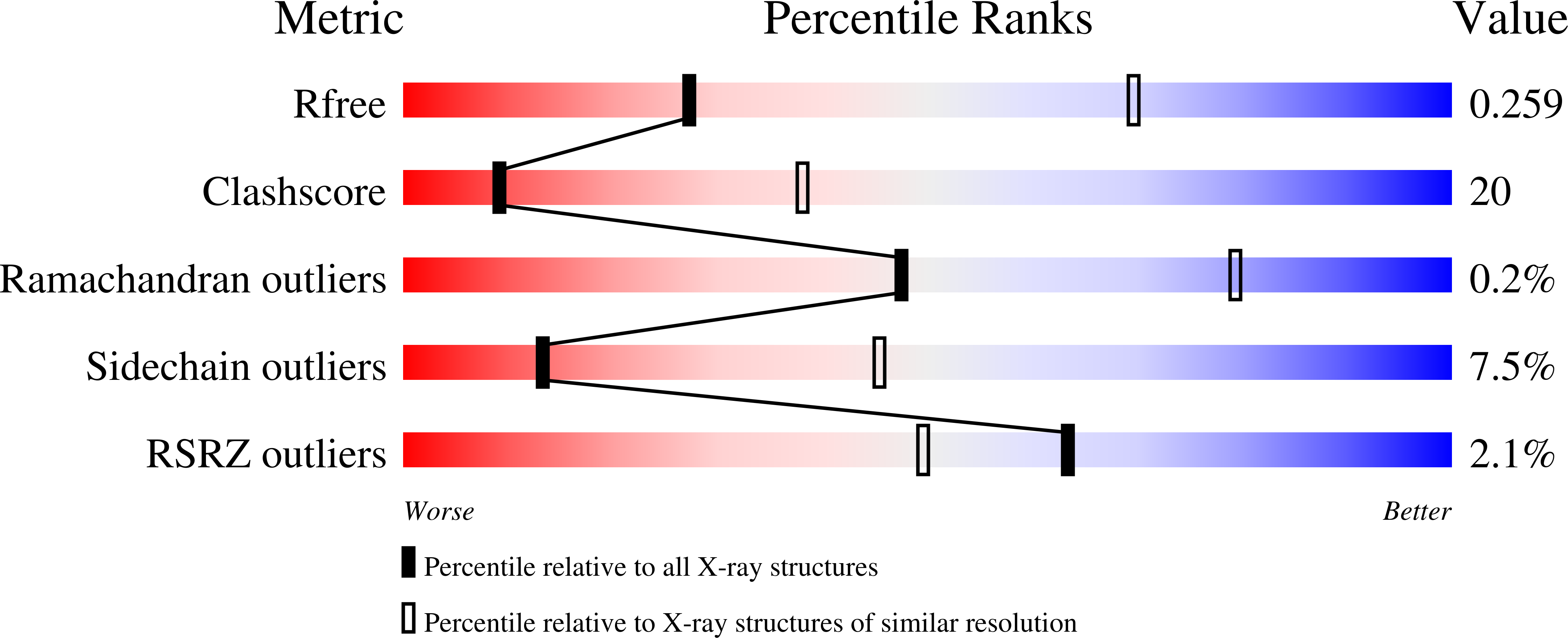Structural basis for inhibition of a voltage-gated Ca(2+) channel by Ca(2+) antagonist drugs.
Tang, L., El-Din, T.M., Swanson, T.M., Pryde, D.C., Scheuer, T., Zheng, N., Catterall, W.A.(2016) Nature 537: 117-121
- PubMed: 27556947
- DOI: https://doi.org/10.1038/nature19102
- Primary Citation of Related Structures:
5KLB, 5KLG, 5KLS, 5KMD, 5KMF, 5KMH - PubMed Abstract:
Ca 2+ antagonist drugs are widely used in therapy of cardiovascular disorders. Three chemical classes of drugs bind to three separate, but allosterically interacting, receptor sites on Ca V 1.2 channels, the most prominent voltage-gated Ca 2+ (Ca V ) channel type in myocytes in cardiac and vascular smooth muscle. The 1,4-dihydropyridines are used primarily for treatment of hypertension and angina pectoris and are thought to act as allosteric modulators of voltage-dependent Ca 2+ channel activation, whereas phenylalkylamines and benzothiazepines are used primarily for treatment of cardiac arrhythmias and are thought to physically block the pore. The structural basis for the different binding, action, and therapeutic uses of these drugs remains unknown. Here we present crystallographic and functional analyses of drug binding to the bacterial homotetrameric model Ca V channel Ca V Ab, which is inhibited by dihydropyridines and phenylalkylamines with nanomolar affinity in a state-dependent manner. The binding site for amlodipine and other dihydropyridines is located on the external, lipid-facing surface of the pore module, positioned at the interface of two subunits. Dihydropyridine binding allosterically induces an asymmetric conformation of the selectivity filter, in which partially dehydrated Ca 2+ interacts directly with one subunit and blocks the pore. In contrast, the phenylalkylamine Br-verapamil binds in the central cavity of the pore on the intracellular side of the selectivity filter, physically blocking the ion-conducting pathway. Structure-based mutations of key amino-acid residues confirm drug binding at both sites. Our results define the structural basis for binding of dihydropyridines and phenylalkylamines at their distinct receptor sites on Ca V channels and offer key insights into their fundamental mechanisms of action and differential therapeutic uses in cardiovascular diseases.
Organizational Affiliation:
Department of Pharmacology, University of Washington, Seattle, Washington 98195-7280, USA.



















